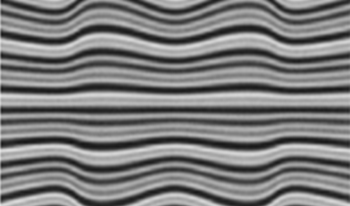Back to articles
Regular Articles
Volume: 3 | Article ID: jpi0311-edi

From the Editor
DOI : 10.2352/J.Percept.Imaging.2020.3.1.010101 Published Online : January 2020
Journal Title : Journal of Perceptual Imaging
Publisher Name : Society for Imaging Science and Technology
Subject Areas :
Views 43
Downloads 5
Cite this article
Bernice Rogowitz, Thrasos Pappas, "From the Editor" in Journal of Perceptual Imaging, 2020, pp 010101-1 - 010101-1, https://doi.org/10.2352/J.Percept.Imaging.2020.3.1.010101
Copyright statement
Copyright © Society for Imaging Science and Technology 2020
The Journal of Perceptual Imaging publishes perceptual research that informs design decisions for imaging, analysis, and visualization systems, and engineering research that sparks new research questions for perception research. This issue provides four papers that illustrate these dual goals.
One of the oldest questions studied in psychophysics is how bright an object appears to be as a function of its physical luminance, and how this perception depends on the size and shape of the object, the way it is illuminated, the objects around it, etc. Michael Rudd’s paper presents a physiologically-based model of lightness perception that uses a different response function for the visual processing of luminance increments and decrements. This new model provides a parsimonious fit to data collected under many different viewing conditions. The generalizability of this model makes it attractive for engineering applications.
In another domain, Christopher Tyler’s paper examines depth perception in stereo, which has implications for virtual reality and other 3-D applications. It is well known that many visual cues contribute to judging the distance of an object, and that different cues have different strengths. But, how are these cues combined? Tyler proposes an accelerated Minkowski distance model where all available depth cues, even weak ones, are used to reach asymptotic depth performance, and uses new and historical data to demonstrate the model’s effectiveness relative to Bayesian and linear summation models.
The paper by Wang, et al. also addresses the visual processing of multiple features, and looks at interactions between texture and the perceived distribution of colors. They use abstractions of real-world textures as stimuli and find that the physical amount of each component color alone does not describe human discrimination judgments. The perceived amount of a dominant color in the texture increases as the elements become larger and decreases as the elements become more elongated. Several psychophysical explanations are explored, and rejected, raising new questions for perceptual research.
Combining psychophysical experiments and machine learning tools, Sarangi, et al. advance a neuromimetic model to distinguish the gender of a walker, with the goal of creating an automated gait classifier for real-world applications. This is a complex perceptual and cognitive task, which depends on spatial and temporal factors and learning. This model builds on human performance, but also compensates for gaps in human judgment, where necessary, to improve discrimination. This back-and-forth between machine learning and human judgment is an important emerging paradigm for building artificial intelligence systems.
We are proud to bring to you this stunning and varied set of papers. Although they explore different imaging technologies and focus on different aspects of human perception and cognition, they all make important advances in research at the intersection of human perception and imaging technology.
 Find this author on Google Scholar
Find this author on Google Scholar Find this author on PubMed
Find this author on PubMed